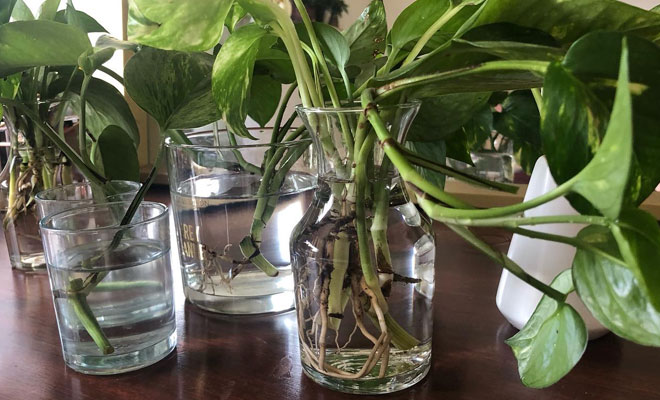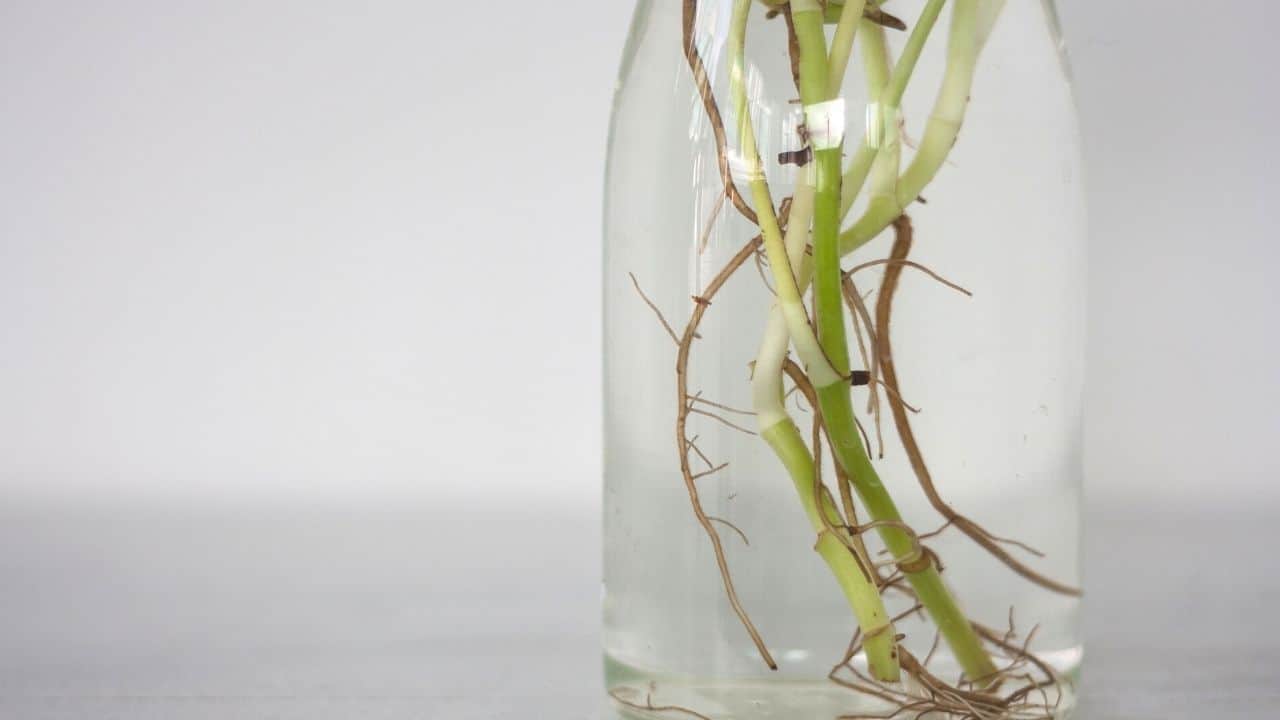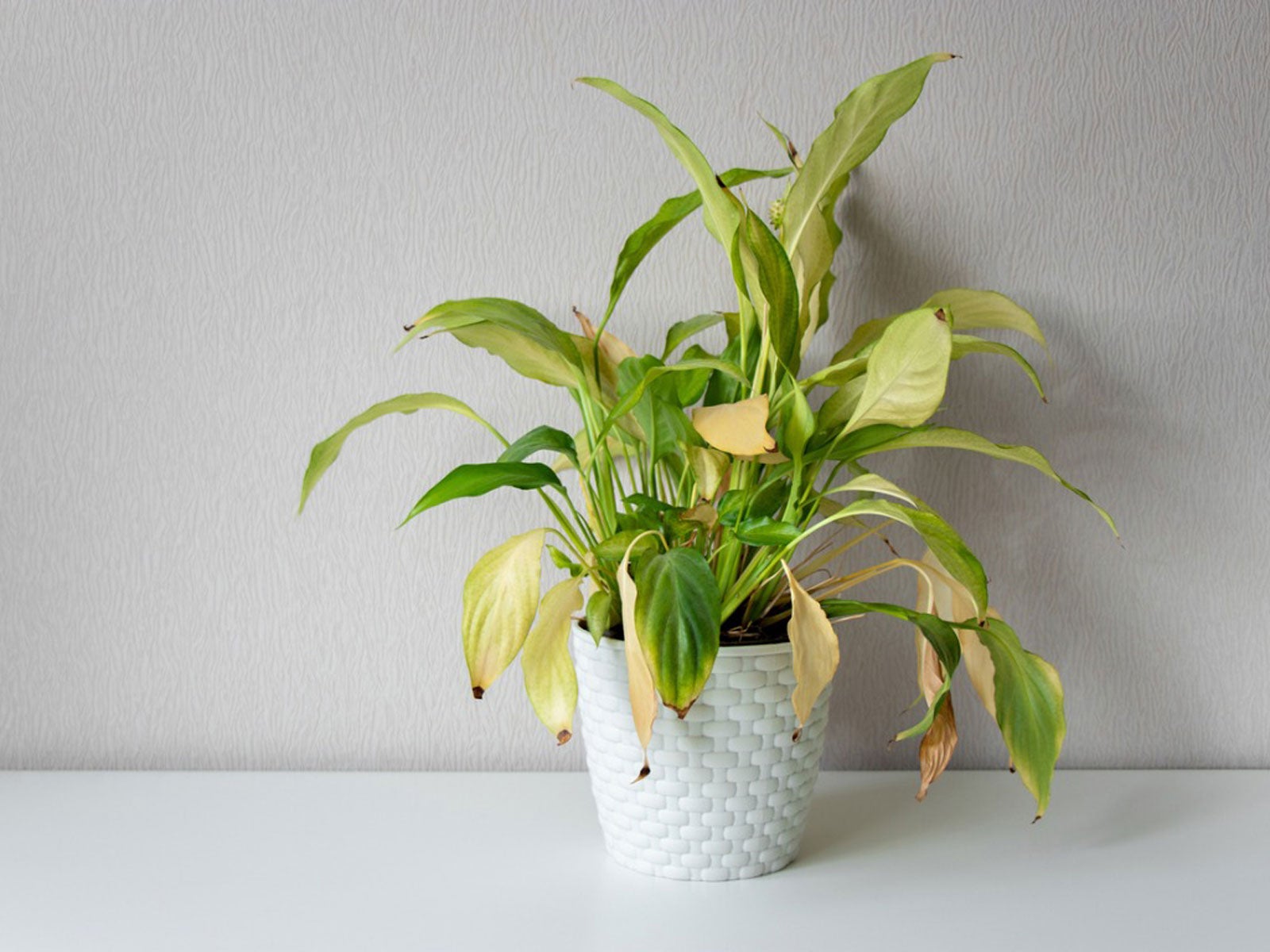An unpleasant odor is a clear indication to inspect your pothos plant roots further. Continue treating root rot by disposing of the soil in the pot that the plant was in.

Root Rot Niche Source: www.nicheplantshop.com
After all roots are pruned sterilize the scissors with a solution of 1 part bleach to 3 parts water 4 to avoid spreading fungal spores to other plants or soil.
Root rot vs healthy roots pothos. Leaf discoloration is usually accompanied by a horrid smell. Alternately the plant may simply be so drenched by an unwitting owner that it drowns. This is because they are potted plants with limited space.
Root rot is a common problem among indoor plants like pothos. Are they white and healthy. This will prevent the spores from transferring.
When a snake plant is experiencing root rot the most probable cause is too much water. Rapid decline of the health of your plant. If possible dip the remaining healthy roots in a fungicide solution to kill off any possible root rot fungus.
The roots start to rot when left for too long in wet conditions. The distinguishing factor between healthy and sick is the texture of the roots. 2 The root system of a healthy plant should be firm and white.
Conclusion Root rot is the most common fungal infection found in plants irrespective of whether they are outdoor plants or indoors like pothos. The main reason is that there is something wrong with the root system of Pothos. The most obvious sign of root rot is the smell.
Pothos root rot. Treating pothos root rot with hydrogen peroxide. The leaves are black rotten and dry.
What Causes Root Rot. When theres root rot you will notice the roots are black mushy and limp looking like seaweeds. As the fungus advances healthy portions of root turn brown and mushy as the roots die.
Root rot can be identified by the presence of soft brown roots. Work quickly to replant within a few hours. Wash the pot thoroughly with a bleach solution.
How to fix or save pothos from root rot. Root rot is a condition that if left untreated will kill plants. Do you know what healthy roots look like for each plant species.
Because of too much moisture in the soil pothos roots do not get enough oxygen and nutrients from the soil and as a result roots start decaying. Root rot is when roots are stunted show cankers or ooze smelly sap. Healthy roots tend to have an earthy smell so if thats not the case chances are your plants roots are decaying.
Overwatering is the primary cause of root rot in pothos. However whilst snake plants are adapted to drier climates Pothos is fine in most places. All parts that are mushy and very soft to the touch are rotted.
Normally it takes about 7-14 days for a Pothos Plant to root in a water medium. However the time can differ according to the growing condition. Root rot is natural to occur with any plant especially with moisture-loving plants.
The most common reason for pothos root rot is overwatering. Knowing which factor is a probable cause of root rot would help you prevent it before it happens. Why does my pothos keep getting affected by root rot.
Pathogen and symptoms. Damaged roots need to be cut off then the plant repotted in. Apart from overwatering over fertilization fungal infection etc can also cause root rot in pothos.
Growers often desire an instant answer and would like to distinguish between root rot diseases immediately. While healthy pothos usually have little to no odor root decomposition has a decay scent emitting from the plant. In this case you must sterilize everything before repotting.
Lets dive in for further details. CUT AWAY ROTTING ROOTS. ROOT ROT TREATMENT STEP 1.
On the outside you can notice your pothos leaves turning pale and yellow even. Root rot vs. Pothos root rot is the most common case.
How the pathogens spread. Click to read further detail. After treating root rot in the plant repot the plant in a clean potting mix.
It even sounds terrible. You can also identify root rot from the decaying smell that comes from the roots. Initially root rot is not visible above the soil.
These roots can easily be rooted into the water for the process of propagation. In some cases root rot. Fusarium Phytophthora Pythium and Thielaviopsis are the most common soil-borne pathogens that infect bedding plants.
Pothos in water root rot. Healthy roots are firm white and pliable. Rotted roots will be brown or black and feel mushy.
Pothos can thrive in water whereas snake plants can easily be overwatered. Rotted roots can either be brown or white in colour. Pothos root rot can be caused by overwatering or a fungal infection in the soil.
Root rot kills the plant slowly and visible signs are only noticed when massive damage is done beneath the soil surface. These are all possible root rot symptoms but examining the roots is the only foolproof way to determine if your plant has root rot. Learn about other causes of yellow Pothos leaves here.
Unhealthy black or brown mushy roots instead of healthy white and firm roots that might even fall off to the touch. One prevalent issue faced by your pothos is root rot. Below is a listing of the.
While root rot can happen anywhere it is quite common in indoor plants. In root rot the excess water drowns the roots preventing aeration and causing plant death. In a nutshell pothos can recover from root rot provided you act promptly before either the entire root system or the upper plant goes off due to severe root rotting.
But when soil is soggy fungal spores multiply and the fungus starts to spread 3 developing in the extremities of the roots first. If you get root rot even after that you can try new propagation from cuttings. Cut away all the parts of the roots that are mushy and are about to fall off.
When taking care of Pothos many people often dry the branches and leaves of Pothos. Root rot Root rot is generally caused by several species of fungi that live in soil which multiply in cool moist conditions and creep into plant roots turning them black and mushy to the touch and preventing the plant from taking adequate nutrients from the soil. The nodes are brown and the emerging roots are white and fleshy.
A rotten egg smell coming out of your plants pot is a sign the roots are rotting possibly due to overwatering. The rot can spread to the healthy roots even when the soil has dried. Such limitation affects the root functions making them more susceptible to diseases.
Instead of a healthy light tan the roots turn black and slimy as the rot progresses. If your pothos plant keeps getting root rot it could be because of some underlying soil problem. Checking for root rot is the best way to identify if your pothos plant is overwatered or not.
The more common attacks on houseplants are often caused by the Erwinia bacterium the Rhizopus or Phytophthora cinnamomi fungus root rot. Then how do you stop root rot in pothos. Root rot in Pothos is different to root rot in plants such as snake plants.
Cut the healthy root just above the damaged area. How to prevent or treat root rot causing pathogens. For example Pothos root rot occurs when we water too much.
Can you save a pothos plant.

Root Rot Noooo Dealing With Root Rot Youtube Source: www.youtube.com

Pothos Root Rot Or Just Too Root Bound R Plantclinic Source: www.reddit.com

How To Save Overwatered Pothos Devil S Ivy Garden For Indoor Source: gardenforindoor.com

Do You Suspect Your Plants Are Suffering From Root Rot Katy Christian Magazine Source: katychristianmagazine.com

Pothos Root Rot Identification Treatment Prevention Source: plantophiles.com

Tips And Information For Treating Root Rot In Houseplants Source: www.gardeningknowhow.com
